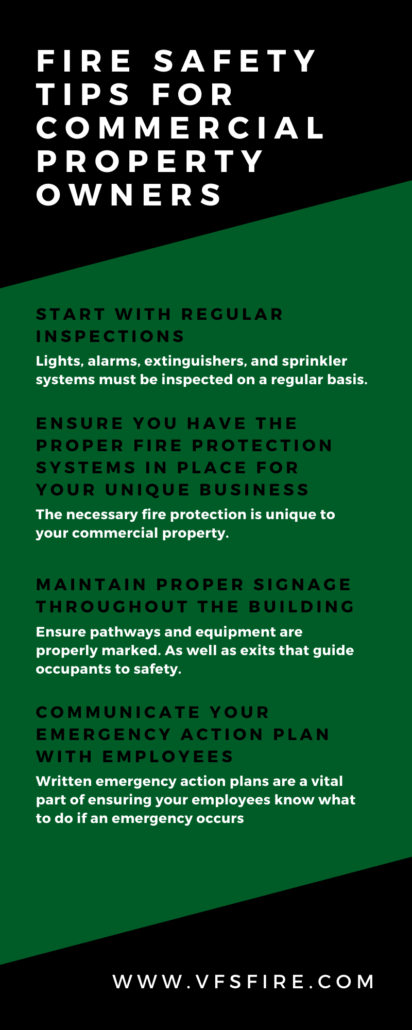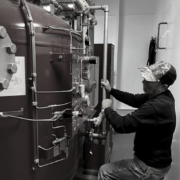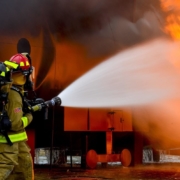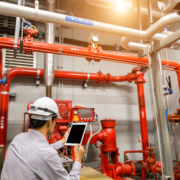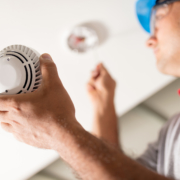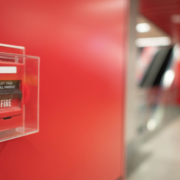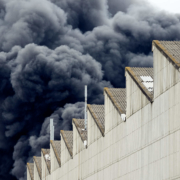Fire Safety Tips for Commercial Property Owners
EYEWASH STATIONS ARE NOT JUST FOR GETTING DEL FUEGO OUT OF YOUR EYES (WE GET IT… WE LOVE TACO BELL TOO)
Commercial Property Owners: Ensuring your building remains safe from harm is essential to your ongoing success. The foundation of your building safety protocol is fire safety. According to Chad Connor at AZ Big Media, about 120,000 commercial property fires occurred in 2019, resulting in $4.3 billion in property damage, 1,200 injuries, and 110 deaths. In order to ensure your commercial property isn’t included in that number, you need to put the proper fire safety precautions in place.
START WITH REGULAR INSPECTIONS
Safety alert lights, fire alarms, fire extinguishers, and sprinkler systems must be inspected on a regular basis. Each fire protection system requires a different maintenance schedule. It’s important to stay on top of your inspection schedule in order to ensure your property remains up to code and safe for its occupants.
- NFPA 25 Standard for the Inspection, Testing, and Maintenance of Water-Based Fire Protection Systems
- NFPA 72 National Fire Alarm and Signaling Code
- NFPA 10 Standard for Portable Fire Extinguishers
- NFPA 17A Standard for Wet Chemical Extinguishing Systems (Kitchen Systems)
- NFPA 17 Standard for Dry Chemical Extinguishing Systems (Paint Spray Booths)
- NFPA 2001 Standard on Clean Agent Fire Extinguishing Systems
At VFS, we assist our clients in maintaining their inspection schedules to ensure ongoing fire and life safety success. As a business owner, it’s important that you or your facilities manager are present for all inspections. Knowing the overall health of your facility allows you to plan for future expenses and report accurate safety updates to your insurers.
ENSURE YOU HAVE THE PROPER FIRE PROTECTION SYSTEMS IN PLACE FOR YOUR UNIQUE BUSINESS
Your commercial property is unique to the needs of your business. Similarly, the necessary fire protection is unique to your commercial property. Understanding what fire protection systems you need in place to ensure your building remains safe is essential. Here are a few fire protection systems you may need to consider:
- Smoke management systems
- Automatic closing doors
- Private fire hydrants
- Fire alarm systems
- Communication systems
- Emergency generator and standby power systems
- Sprinkler Systems
- Standpipe systems
- Pressurized stair shaft
- Elevators automatic Phase 1 & 2
- Fire extinguishers
- Fire pumps
MAINTAIN PROPER SIGNAGE THROUGHOUT THE BUILDING
Indoor and outdoor signage is essential to the safety of your building. Firefighters cannot do their job if they do not have access to equipment and pathways to access the emergency. Floors and rooms should be clearly mapped, access to specific areas like the roof should be clearly labeled, and fire safety equipment and hazardous materials need to be identified.
Occupants cannot get to safety without understanding where the nearest exit is. Exit lighting can be an overlooked area of your fire safety. When a fire begins, the conditions will likely induce chaos and confusion. Smoke can cause occupants’ vision to be obscured and make it difficult to navigate around the office space. Ensure all exit signs are illuminated and easy to read. Consider auditory alerts as well as visual alerts for those who are visually impaired or in the case of heavy smoke.
COMMUNICATE YOUR EMERGENCY ACTION PLAN WITH EMPLOYEES
Written emergency action plans are a vital part of ensuring your employees know what to do if an emergency occurs. These plans should cover actions both employers and employees should take to remain safe during fire emergencies. It should include the equipment that needs to be shut down, escape routes, and when and where manual fire suppression efforts should take place.
Ensure the management team occupying your building reviews the emergency action plan with all employees at various times throughout their time in the building. It should be reviewed when it’s developed, when employee’s responsibilities change, and when the plan changes.
ENSURE YOU HAVE SPECIAL HAZARD PROTECTION IN PLACE IF NECESSARY.
Special hazard protection is not a commonly discussed fire safety topic. Ensuring buildings are up to special hazard standards takes a very specialized skill set to perform.
Custom fire and life safety doesn’t stop with fire suppression and sprinkler systems. Emergency eyewash stations or emergency showers are a vital part of certain special hazardous situations. In cases where chemicals are in play, eyewash stations are a critical safety element.
At VFS, we pride ourselves on our expertise when it comes to special hazard protection. We understand that special hazard safety begins with the integration of custom fire sprinkler systems, special hazard solutions, and fire alarms.



